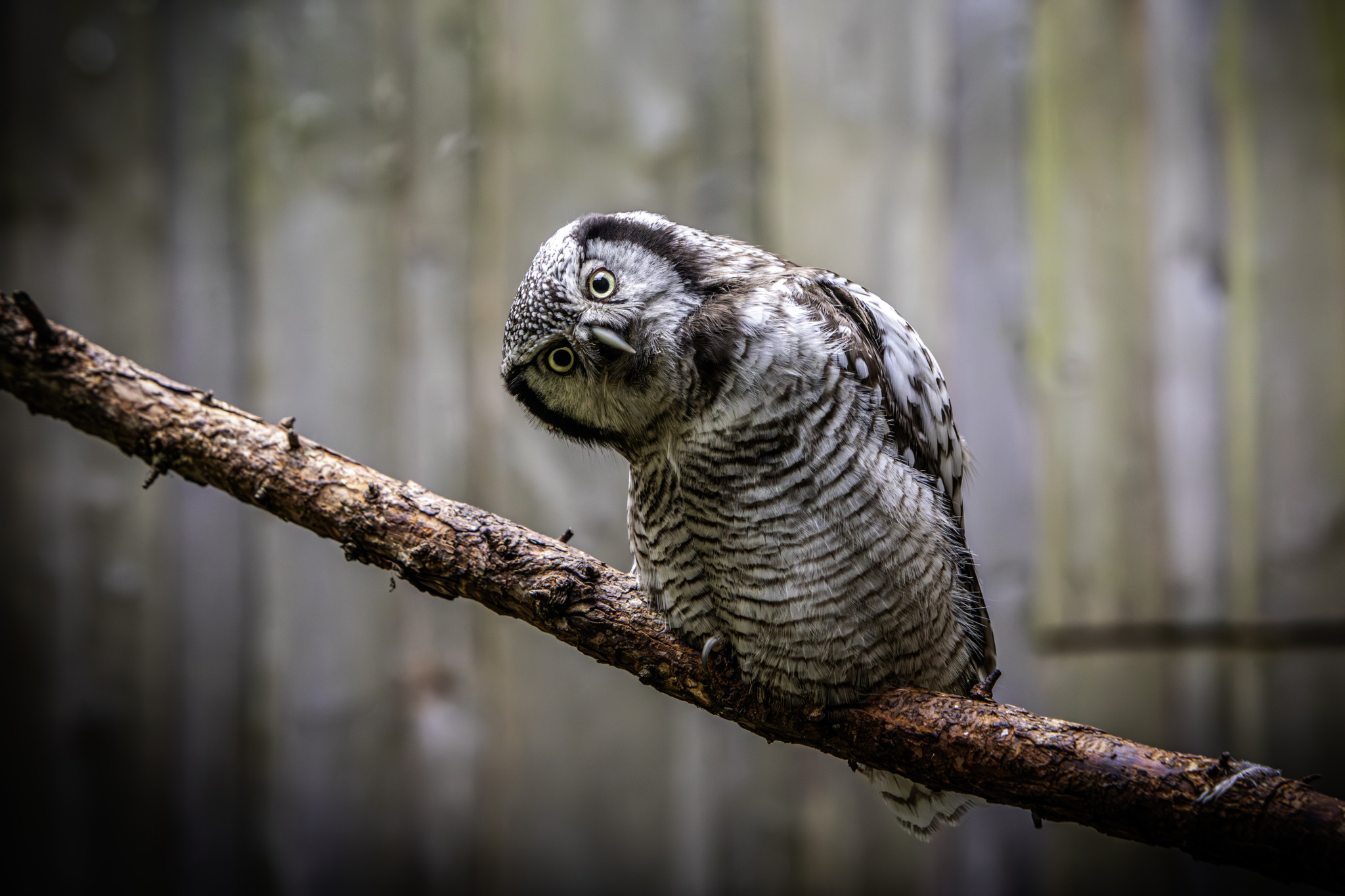Here’s a full natural history overview of the Northern Hawk-Owl (Surnia ulula), one of the most unusual owls in the Northern Hemisphere:
Northern Hawk-Owl (Surnia ulula)
Taxonomy & Classification
- Kingdom: Animalia
- Phylum: Chordata
- Class: Aves
- Order: Strigiformes
- Family: Strigidae (Typical owls)
- Genus: Surnia
- Species: S. ulula
- Common names: Northern Hawk-Owl, Hawk Owl
General Description
- Size: 35–45 cm in length, wingspan about 70–85 cm.
- Weight: 300–400 g.
- Appearance:
- Long-tailed owl with a slim, hawk-like silhouette.
- Upperparts brown with white spotting; underparts pale with dark streaks.
- Rounded head without ear tufts.
- Yellow eyes and hooked beak typical of owls.
- Distinctive feature: Often mistaken for a hawk due to its long tail, pointed wings, and daytime hunting behavior.
Behavior & Lifestyle
- Diurnal hunter: Unlike most owls, it is active during the day, especially in the morning and afternoon.
- Perching style: Sits on tall trees, snags, or poles to scan the ground for prey.
- Flight: Swift and hawk-like, adapted for pursuing prey in open areas.
- Vocalizations: A rapid, high-pitched trill or series of whistles, used mainly in the breeding season.
Diet
- Primary food: Small mammals (voles, lemmings, mice) are the main diet.
- Birds: Occasionally takes small to medium-sized birds, especially in winter when rodents are scarce.
- Hunting strategy:
- Uses keen eyesight to spot prey from perches.
- Can detect small movements even in low light.
- Dives rapidly from perch to capture prey with talons.
Life Cycle & Breeding
- Breeding season: Spring (April–June), depending on latitude and food supply.
- Nesting sites: Uses natural tree cavities, broken tops of snags, or old woodpecker holes.
- Clutch size: 3–7 eggs, more in years of abundant rodent populations.
- Incubation: 25–30 days, mainly by the female.
- Fledging: Chicks leave the nest about 3–4 weeks after hatching but remain dependent on parents for several weeks.
Habitat
- Prefers boreal forests interspersed with open areas such as bogs, clearings, meadows, and tundra edges.
- Often seen in forest openings where prey is easier to spot.
Geographic Range
- Found across the northern boreal regions of North America, Europe, and Asia.
- Distribution stretches from Alaska and Canada through Scandinavia and across Siberia.
Ecological Role
- Rodent control: Plays an important role in regulating vole and lemming populations.
- Prey base: Provides food for larger raptors and predators.
- Indicator species: Population booms and declines are tied to rodent cycles, reflecting the health of northern ecosystems.
Conservation Status
- IUCN Red List: Least Concern.
- Population trends: Generally stable, though fluctuations occur with prey availability.
- Threats:
- Habitat loss through logging and development.
- Declines in prey populations due to climate change and human disturbance.
- Conservation measures: Protecting boreal forests and maintaining dead trees for nesting cavities.
Interesting Facts
- One of the few truly diurnal owls, alongside species like the snowy owl.
- Can spot prey up to 800 meters away, thanks to exceptional vision.
- In peak vole years, pairs may raise unusually large broods.
- Its hawk-like hunting style gives it its name, though it is a true owl.
Visited 892 times, 3 visit(s) today
Views: 1228
Subscribe to the newsletter:
